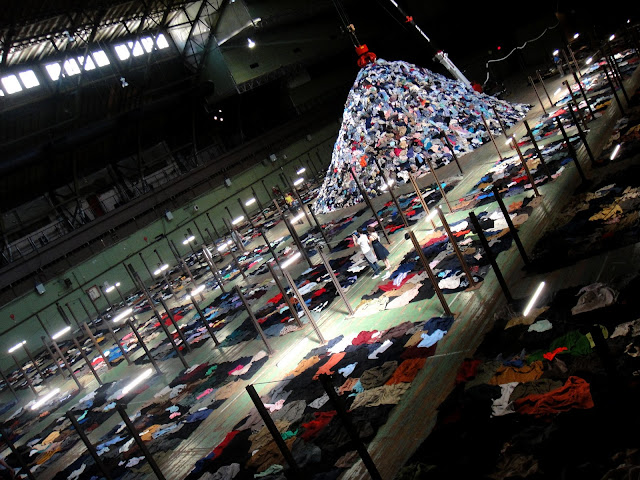(Window photography by Rudy Pospisil)
The current windows on display in Bergdorf Goodman's Fifth Avenue facade celebrate the history of the mannequin. The mannequin has evolved in shape, size, and purpose since its original inception in the 1570's as an artist's jointed model (showcased in the Goyard shadow box). Mannequin forms were, and still are, created to meet their time's societal standards of beautiful perfection - languid necks, pouty lips, gazing eyes, wrought hair styles, skin colored with make-up, or skin blank as a painter's canvas. Each window displays this history with vintage forms as well as the newest mannequin model used today, coined "the Schlappi", which is categorized by its a la mode slender limbs and posture.
David Hoey, BG's famed Window Director, and his team masterfully set a collection of antique mannequins in front of various photographs by Rebecca Martinez, a San Francisco based photographer. To prep for these windows, the Visual team had, over the span of six years, slowly acquired these forms, collecting them from wholesale outposts throughout the city and even bidding for them on eBay. In her collection, "Beauty Challenged", Martinez captured images of decaying vintage mannequins. As she explains in her artist's statement about this collection of photographs: "mannequins are exemplars of an idealized, unobtainable, youthful perfection...These cloned representations of society's ideal of beauty hold this status for a limited time." Changing seasons usher in new perceptions of what is beautiful. Much like last season's of-the-moment must-have fashion splurge, these mannequins are often tossed away and forgotten once they "become marked by usage and decay", just in time to purchase the latest model fresh off the racks. When brought to our attention again in these windows and photographs, these mannequins become haunting relics of the past, reminders of our past societal ideals of beauty. Once popular and celebrated for their perfect representation of the female form, they now gaze at us through the glass window with exhausted stares of aged irrelevancy.
But, the strength in these window displays lies not in their depiction of the past, but rather in their commentary on the present. Though our favored aesthetics may have changed over time, we still value the pursuit of beauty today in art, fashion, and culture. In their own unique way, each of these mannequins serve as an exhibition of our best. One can only know where we are going if we know where we've been. And, from the looks of it, we've gone from a graphically, spotted vintage Libertine dress to its perfectly paired, abstractly patterned, olive Marni coat from the newly arrived Pre Fall collections on the 3rd Floor!








.jpg)












